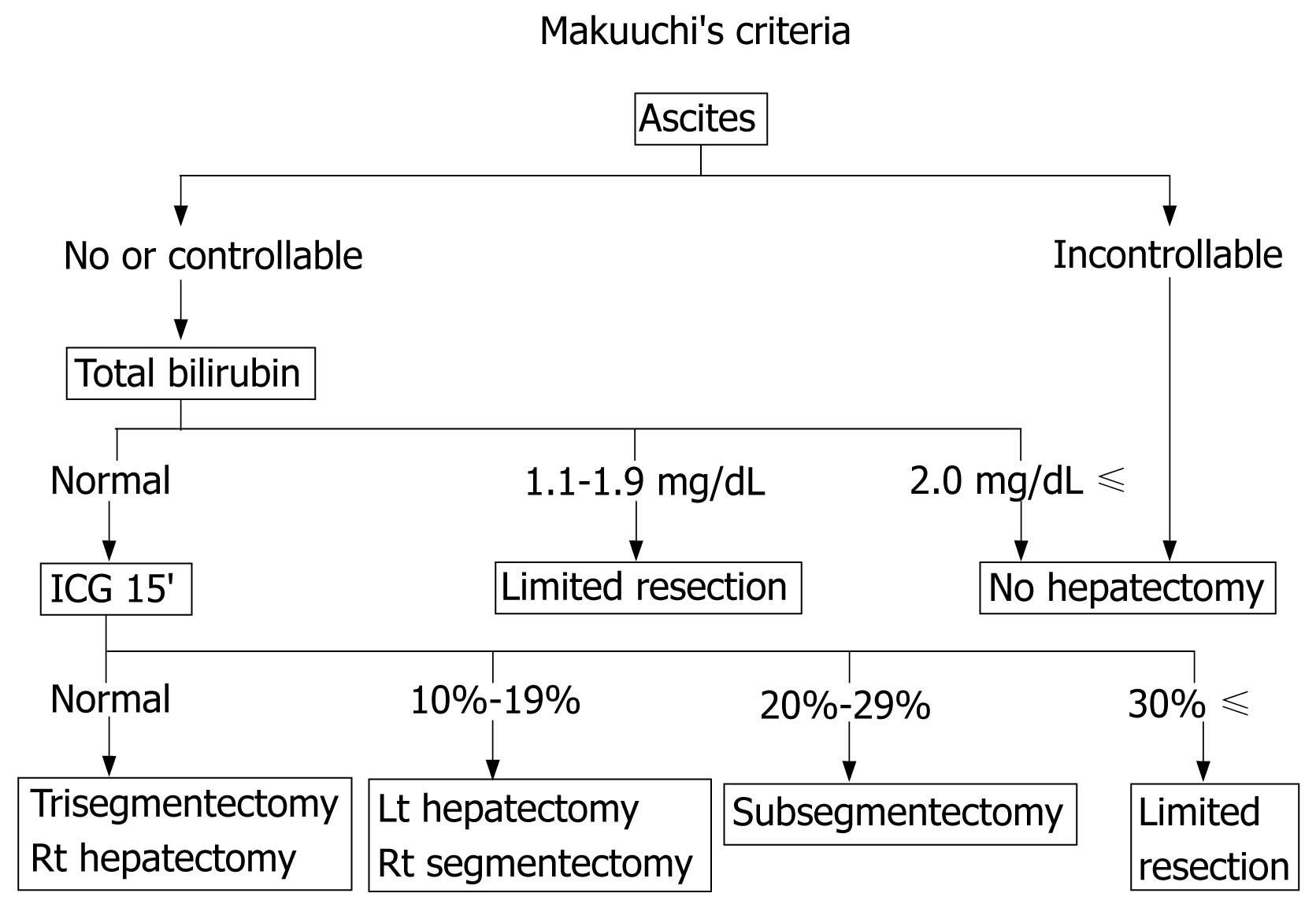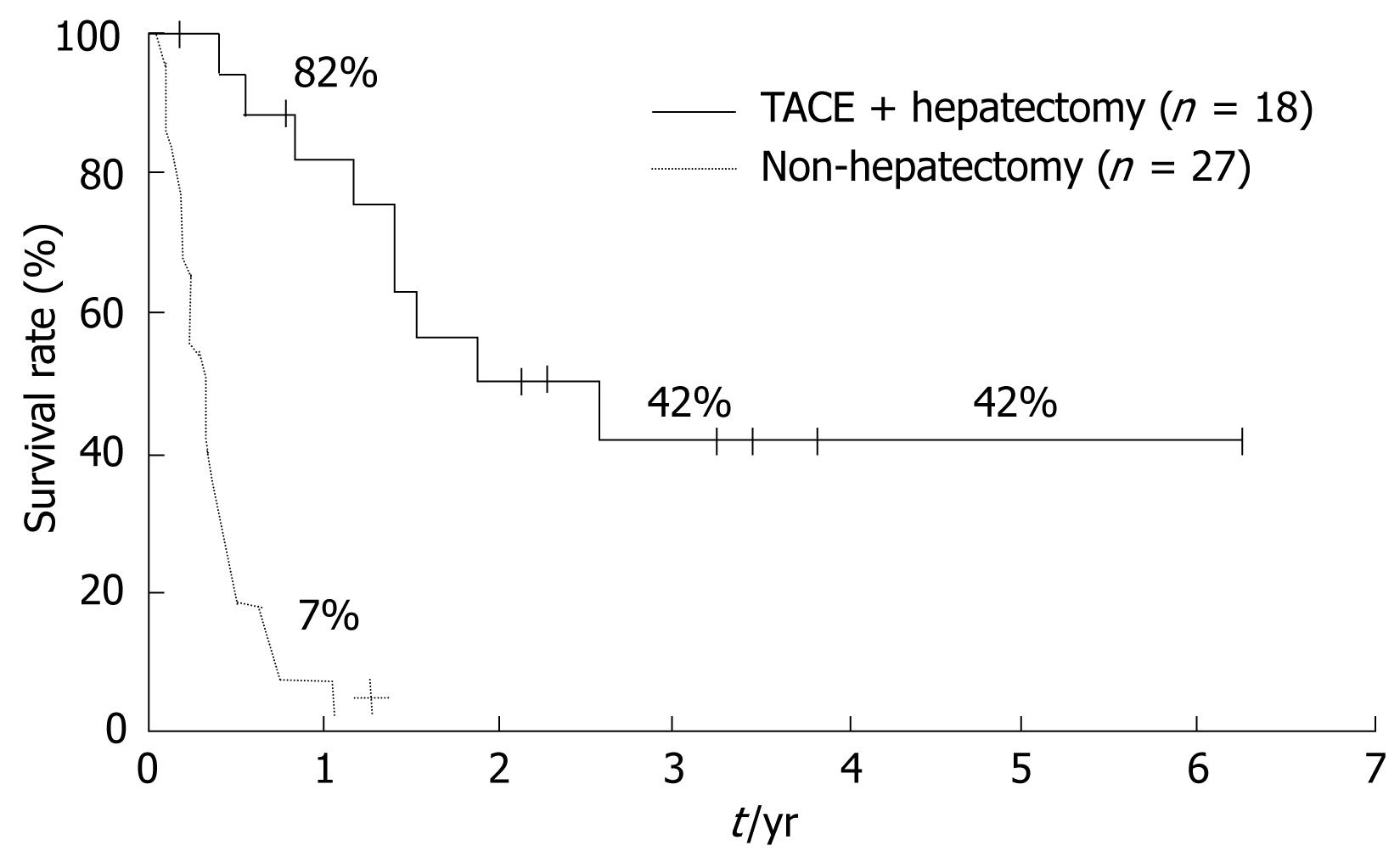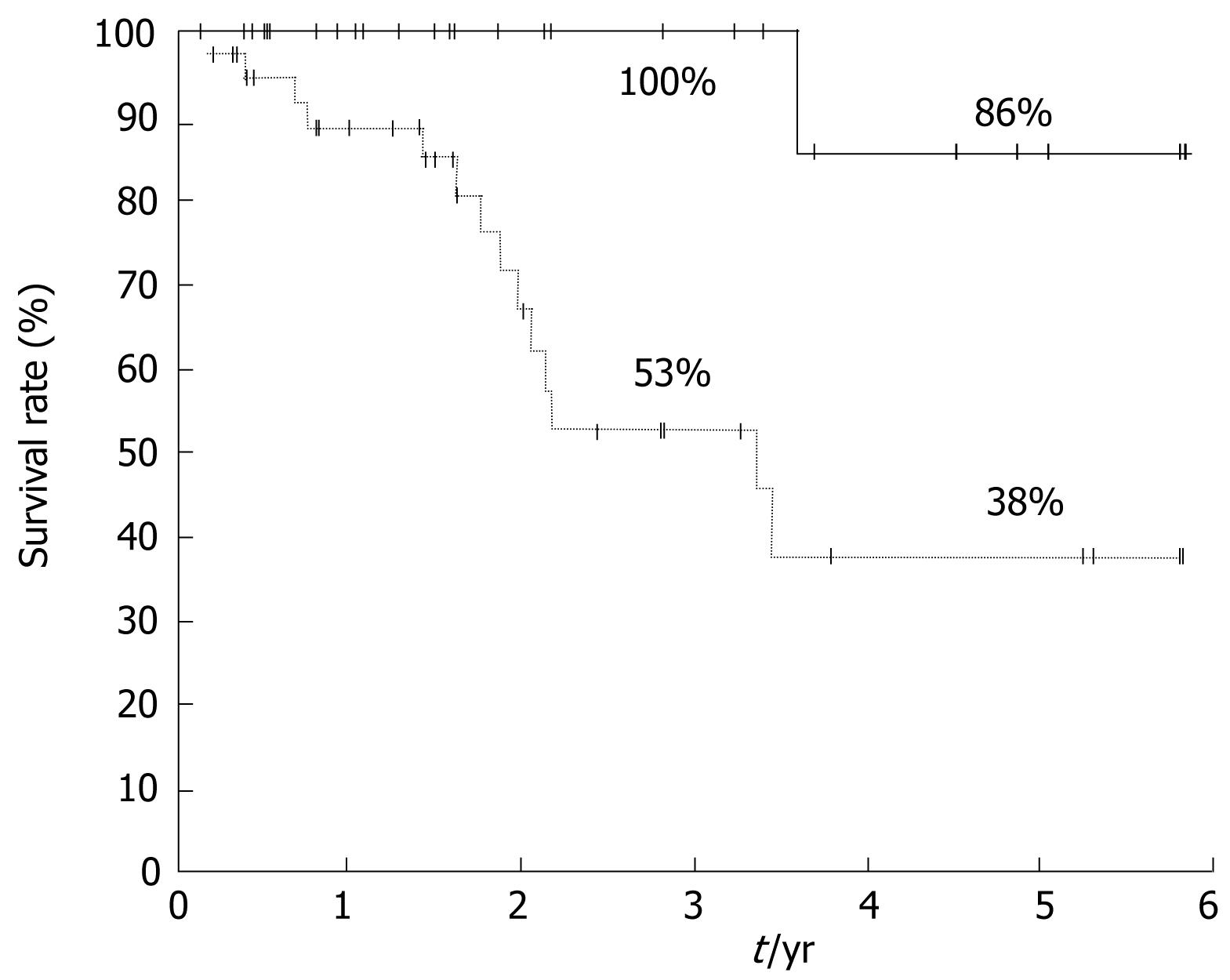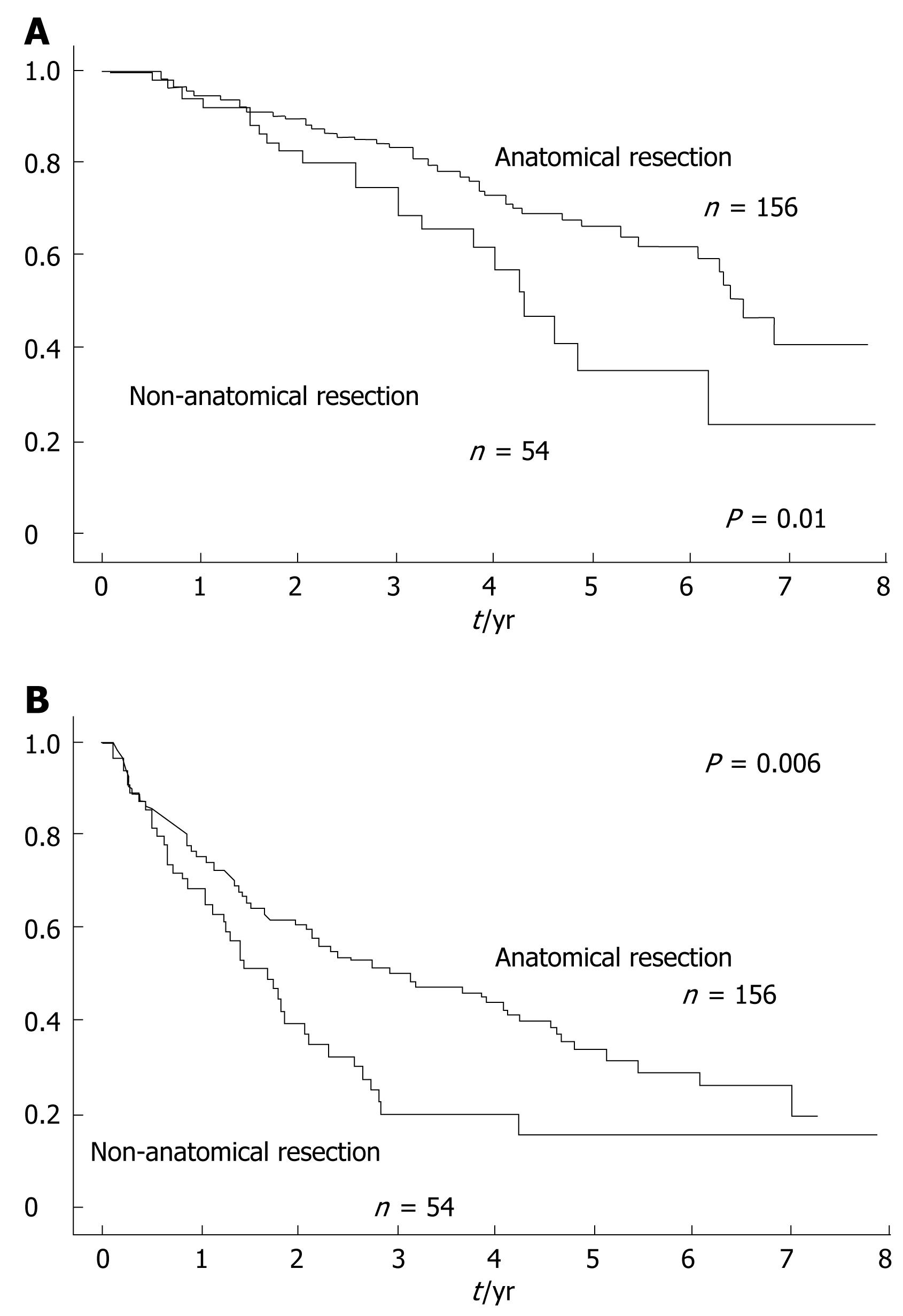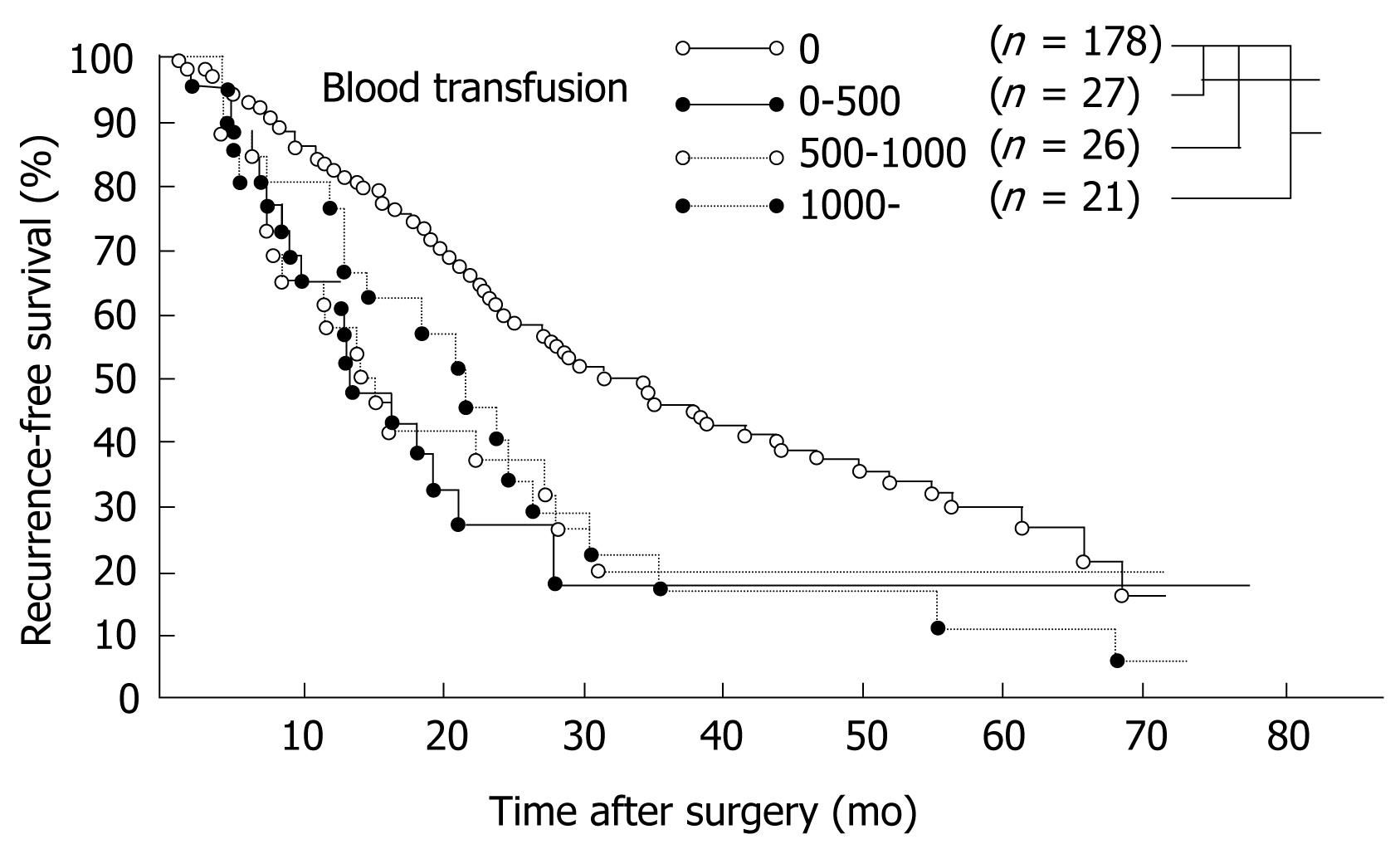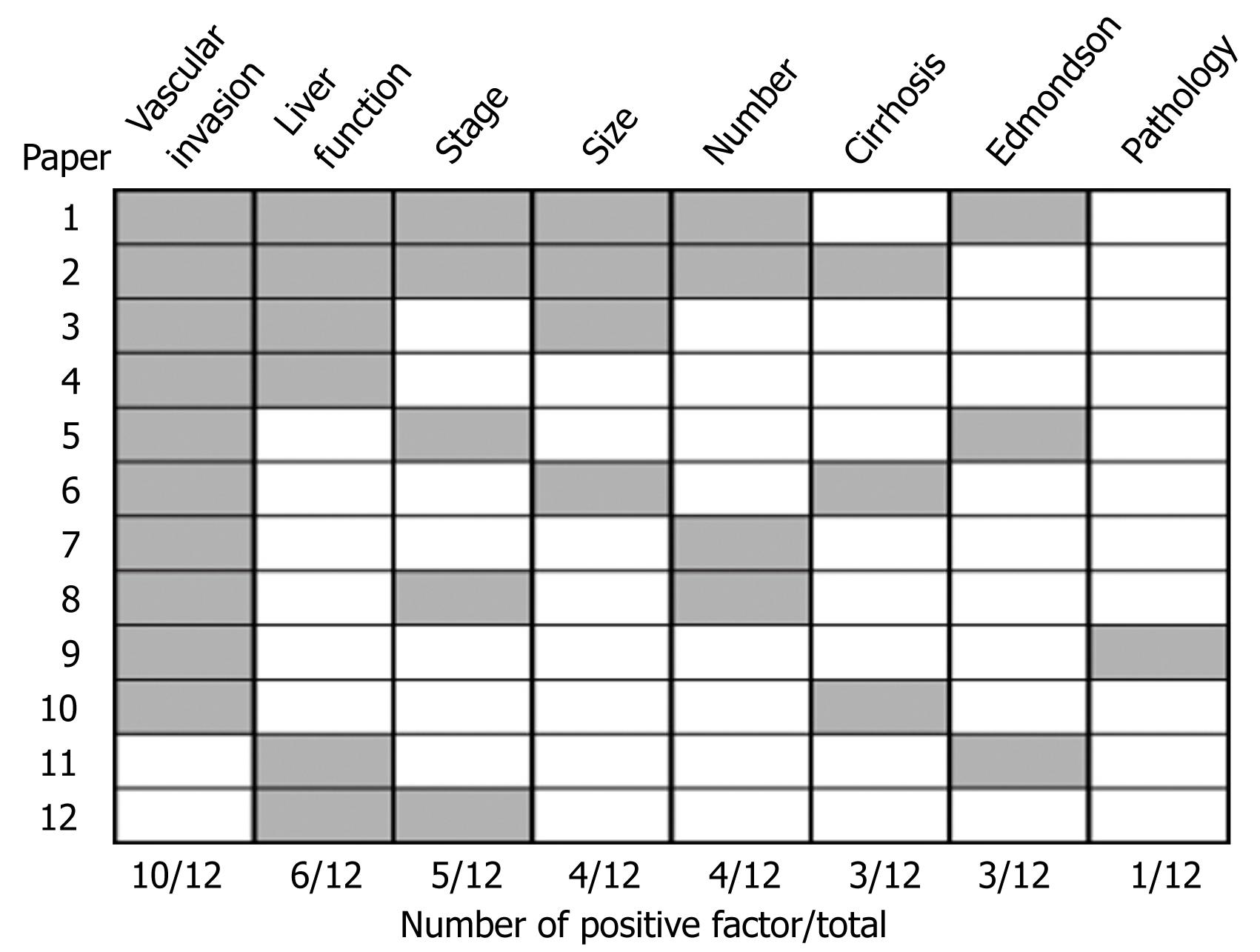Copyright
©2008 The WJG Press and Baishideng.
World J Gastroenterol. Feb 7, 2008; 14(5): 685-692
Published online Feb 7, 2008. doi: 10.3748/wjg.14.685
Published online Feb 7, 2008. doi: 10.3748/wjg.14.685
Figure 1 Selection criteria and proportion of evidence level in surgical treatment of hepatocellular carcinoma.
We searched the literature using the Medline Dialog System with four keywords: HCC, surgery, English papers, in the last 20 years. The 915 publications were systematically reviewed by 3 steps. Almost all publications were retrospective (76%), there were only 24 (24%) with a high level evidence.
Figure 2 Algorithm before proceeding to safety hepatectomy for HCC with cirrhotic liver.
Makuuchi's criteria include three factors: ascites, total serum bilirubin, and the ICG-R15: indocyanine green 15 min retention rate. This algorithm shows the maximal area for which an operation can be performed safely.
Figure 3 Treatment for HCC with portal vein tumor thrombus.
Patient survival can be improved by TACE plus hepatectomy, when the number of primary nodules is not greater than two, the portal trunk is not occluded by tumor thrombus, and the indocyanine green retention rate at 15 min is > 20%. Minagawa et al. Ann Surg. 2001.
Figure 4 The result of repeat hepatic resection.
Repeat hepatic resection is a satisfactory result in patients previously having undergone resection of a single HCC at primary resection and in whom recurrence developed after a disease-free interval of one year or more and the recurrent tumor had no portal invasion. Minagawa et al. Ann Surg. 2003.
Figure 5 Anatomical resection in HCC.
Overall (A) and disease-free (B) survival in anatomical and non-anatomical resection for single HCC. Both the five-year overall survival and disease-free survival rates in the anatomic resection group were significantly better than those in the non-anatomic resection group. Hasegawa et al. Ann Surg. 2003.
Figure 6 The relation between blood transfusion and recurrence.
A close relationship between blood transfusion and recurrence-free survival was shown. Yamamoto et al . surgery 1994.
Figure 7 Prognostic factors in HCC.
The eight main prognostic factors (vascular invasion, liver function, the stage of TNM classification, tumor diameter, number of tumor, degree of cirrhosis, Edmondson classification, and pathological type) were identified in twelve major publications. Vascular invasion, pTNM stage, and liver function are the most powerful prognostic factors.
Figure 8 Adoptive immunotherapy in HCC.
Autologous lymphocytes activated in vitro with recombinant interleukin-2 and infused five times during the first month. Adoptive immunotherapy reduces recurrence and improves recurrence-free survival after surgery for HCC. Takayama et al. Lancet 2000.
Figure 9 Effects of adjuvant therapy in HCC.
Relative risk of recurrence in three RCTs by meta-analysis. The boxes show the relative risk, and the lines indicate 95% CI. A significant relative risk reduction was seen for recurrence (60%, SD 16%). O-E: observed-expected difference by Peto’s method. Takayama et al. Cancer Reviews 2003.
- Citation: Yamazaki S, Takayama T. Surgical treatment of hepatocellular carcinoma: Evidence-based outcomes. World J Gastroenterol 2008; 14(5): 685-692
- URL: https://www.wjgnet.com/1007-9327/full/v14/i5/685.htm
- DOI: https://dx.doi.org/10.3748/wjg.14.685














